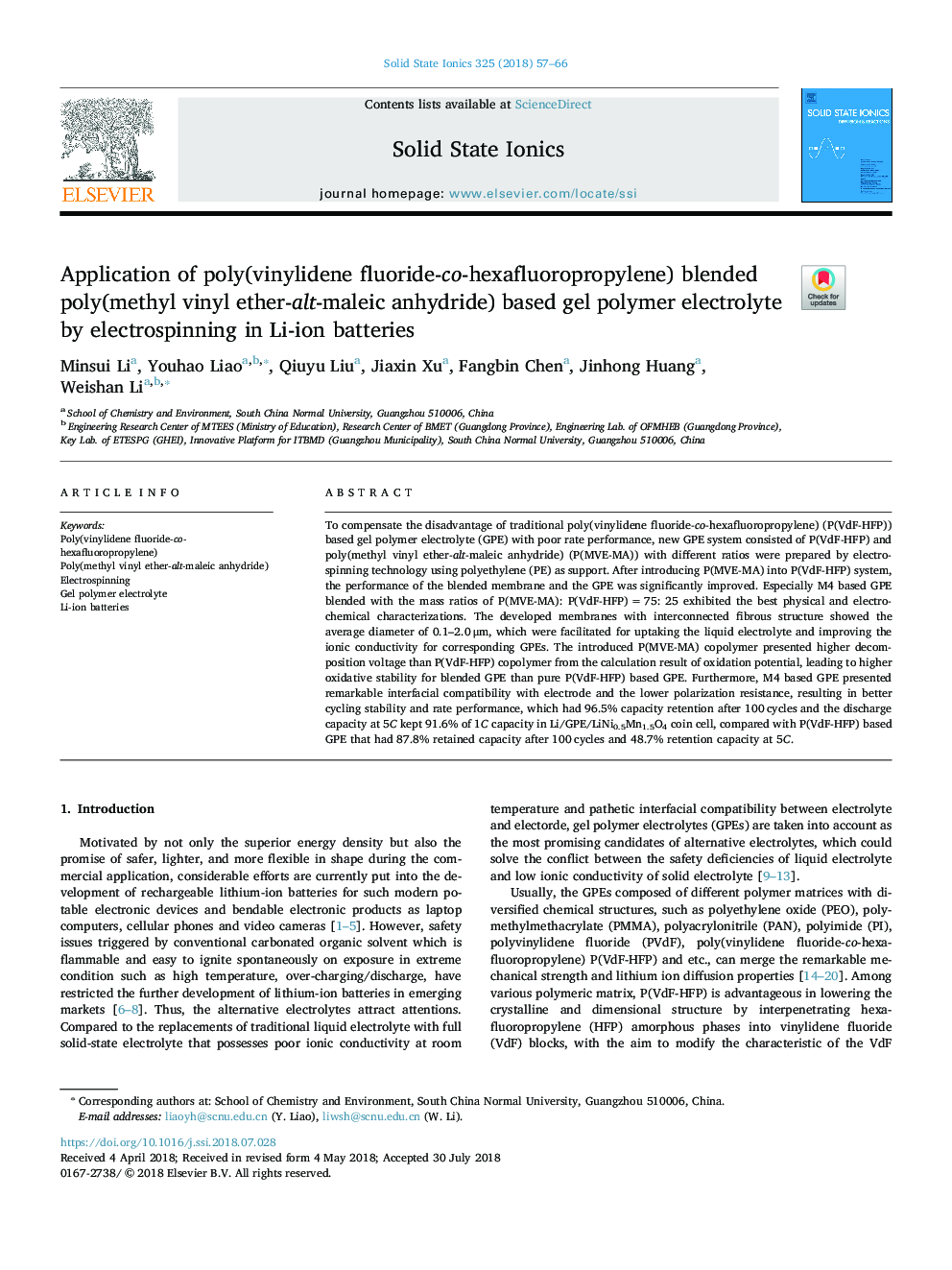| Article ID | Journal | Published Year | Pages | File Type |
|---|---|---|---|---|
| 7744166 | Solid State Ionics | 2018 | 10 Pages |
Abstract
To compensate the disadvantage of traditional poly(vinylidene fluoride-co-hexafluoropropylene) (P(VdF-HFP)) based gel polymer electrolyte (GPE) with poor rate performance, new GPE system consisted of P(VdF-HFP) and poly(methyl vinyl ether-alt-maleic anhydride) (P(MVE-MA)) with different ratios were prepared by electrospinning technology using polyethylene (PE) as support. After introducing P(MVE-MA) into P(VdF-HFP) system, the performance of the blended membrane and the GPE was significantly improved. Especially M4 based GPE blended with the mass ratios of P(MVE-MA): P(VdF-HFP)â¯=â¯75: 25 exhibited the best physical and electrochemical characterizations. The developed membranes with interconnected fibrous structure showed the average diameter of 0.1-2.0â¯Î¼m, which were facilitated for uptaking the liquid electrolyte and improving the ionic conductivity for corresponding GPEs. The introduced P(MVE-MA) copolymer presented higher decomposition voltage than P(VdF-HFP) copolymer from the calculation result of oxidation potential, leading to higher oxidative stability for blended GPE than pure P(VdF-HFP) based GPE. Furthermore, M4 based GPE presented remarkable interfacial compatibility with electrode and the lower polarization resistance, resulting in better cycling stability and rate performance, which had 96.5% capacity retention after 100â¯cycles and the discharge capacity at 5C kept 91.6% of 1C capacity in Li/GPE/LiNi0.5Mn1.5O4 coin cell, compared with P(VdF-HFP) based GPE that had 87.8% retained capacity after 100â¯cycles and 48.7% retention capacity at 5C.
Keywords
Related Topics
Physical Sciences and Engineering
Chemistry
Electrochemistry
Authors
Minsui Li, Youhao Liao, Qiuyu Liu, Jiaxin Xu, Fangbin Chen, Jinhong Huang, Weishan Li,
